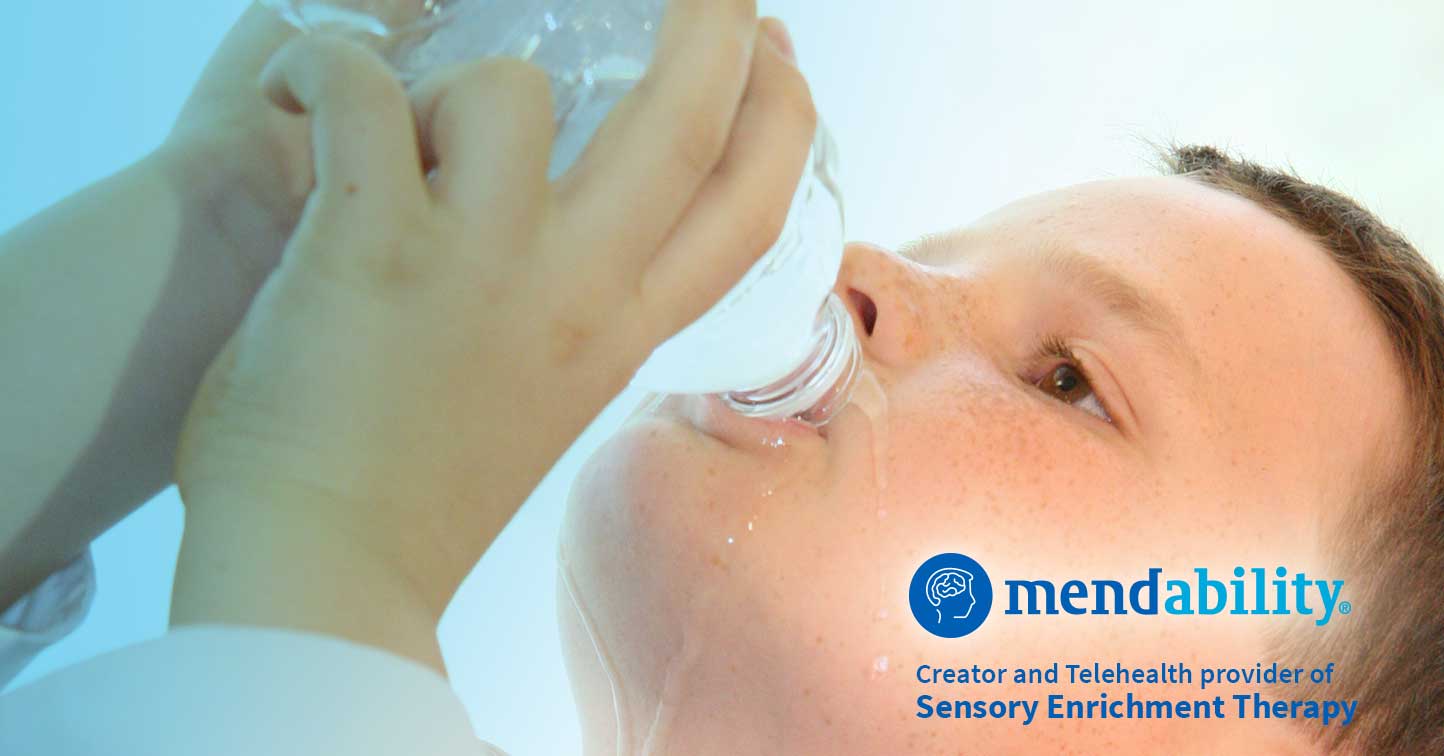Children with autism may need help to stay hydrated
Summer is a time of outdoor activities, heat, and sunshine. There is great potential for fun, as long as we are careful about our fluid intake.
You might think that it is easy to make sure you drink enough: if you are thirsty, you drink. However, children generally need help to make sure that they stay hydrated when the temperature rises, and children with special needs require extra help.
Not enough water may lead to discomfort and even serious physical distress.7
We are going to share some recommendations in this article about helping children to stay hydrated and why they need your help.
Why children need to drink more
Everyone needs to drink more water in the summertime, but this is even more important in the case of children with autism as they have specific difficulties with temperature perception and self-awareness.6
- Children have a higher need for water than adults because they have a higher surface area to body mass ratio. This means that the proportion of a child’s body surface this exposed to heat is greater than for an adult.35
- If children do not drink enough when they are being active in the summertime (called hypohydration), they often respond with a higher relative increase in core temperature than an adult does. Also, because they sweat less they lose some of the benefits of evaporative cooling. 2
- Young children do not know the potential harm of heat exposure so they do not seek protection from the sun like an adult. They may not choose to play in the shade or choose to wear a hat.
- Children often do not complain about heat exposure until it is too late. If you wait until your child says he is thirsty, then he is already dehydrated. Signs of heat exposure include: fast heartbeat, sweating, nausea or vomiting, and headaches.
Mendability water games and self-awareness
Although the challenges with self-awareness for children with autism mean that they might not drink enough, water is often a great element of play and discovery for children on the autism spectrum. Mendability’s therapy program includes specific exercises that help children with autism and developmental delays to improve their self-awareness by focusing on body posture or tactile processing. One example of these exercises is called the Water Game.
Click here to view the video instructions for this exercise.
How to monitor your child’s fluids
Making sure that your child is correctly hydrated is crucial. One way to decrease your stress level about keeping your child hydrated is to create a monitoring sheet. You can use technology to help you keep track of what your child is drinking, or you can simply write on a sheet of paper that you stick to your fridge door. The important thing is to note how many times your child drinks a cup of water or juice during the course of the day so that you can rest assured they are drinking enough.
Keeping track of your child’s liquid intake will have several benefits. It will:
- Give you peace of mind knowing that you are doing the best you can to keep your child healthy;
- Help you understand how dehydration affects your child’s behavior, if there is a time when your child does not drink enough;1
- Provide you with a useful tool for other people caring for your child at day camps or family events.
Water in food
It is important and helpful to take into account the water we get from the food we eat. Many children with autism are reluctant to eat fresh fruit and vegetables which contain a high amount of water, but some of their favorite foods can also be a good source of fluids. 48
The table below shows the water content range for selected foods:
| Percentage | Food Item |
| 100% | Water |
| 90–99% | Fat-free milk, cantaloupe, strawberries, watermelon, lettuce, cabbage, celery, spinach, pickles, squash (cooked) |
| 80–89% | Fruit juice, yogurt, apples, grapes, oranges, carrots, broccoli (cooked), pears, pineapple |
| 70–79% | Bananas, avocados, cottage cheese, ricotta cheese, potato (baked), corn (cooked), shrimp |
| 60–69% | Pasta, legumes, salmon, ice cream, chicken breast |
| 50–59% | Ground beef, hot dogs, feta cheese, tenderloin steak (cooked) |
| 40–49% | Pizza |
| 30–39% | Cheddar cheese, bagels, bread |
| 20–29% | Pepperoni sausage, cake, biscuits |
| 10–19% | Butter, margarine, raisins |
| 1–9% | Walnuts, peanuts (dry roasted), chocolate chip cookies, crackers, cereals, pretzels, taco shells, peanut butter |
| 0% | Oils, sugars |
Source: The USDA National Nutrient Database for Standard Reference, Release 21
Be careful and have fun
Water is not only the most simple but also the most essential element of good health. Remember that a child does not have the capacity to access water as easily as an adult and may become dehydrated very quickly when you are active on a hot summer day. Be proactive in offering your child fluids so that you can make the most of the summer fun on offer.

